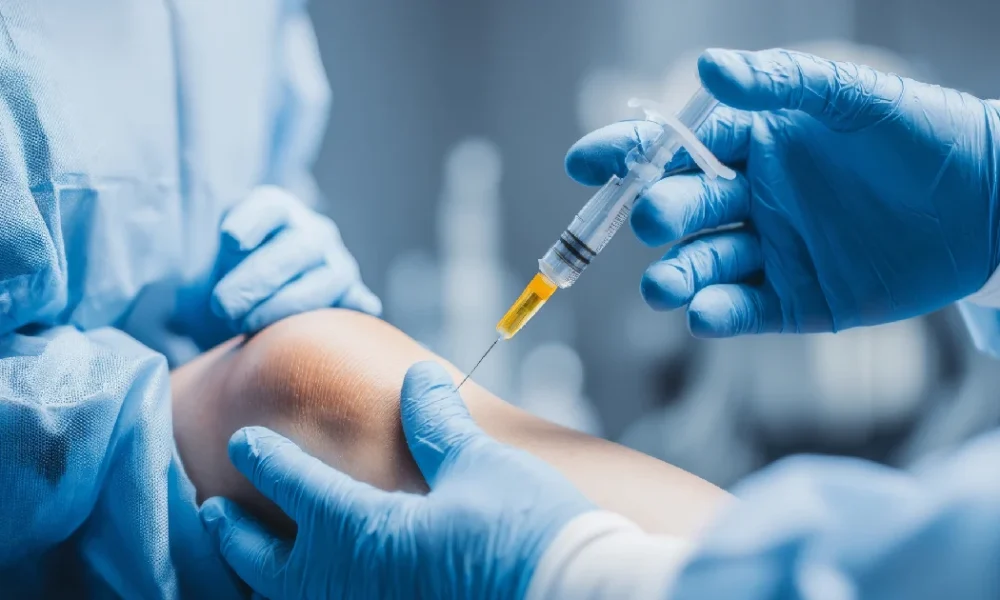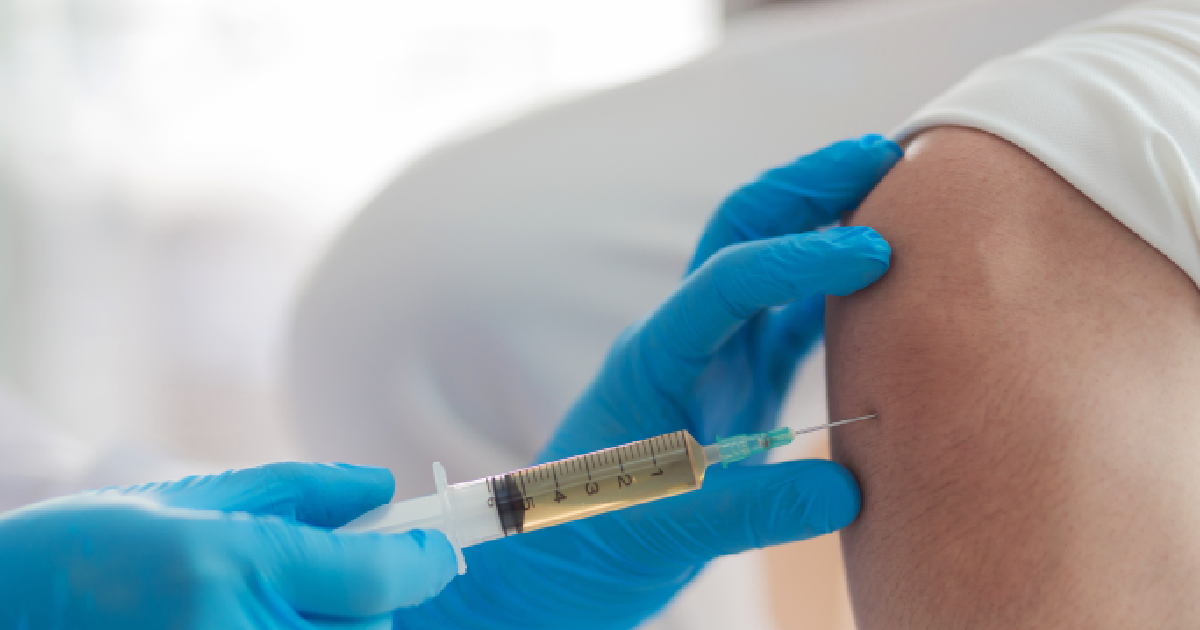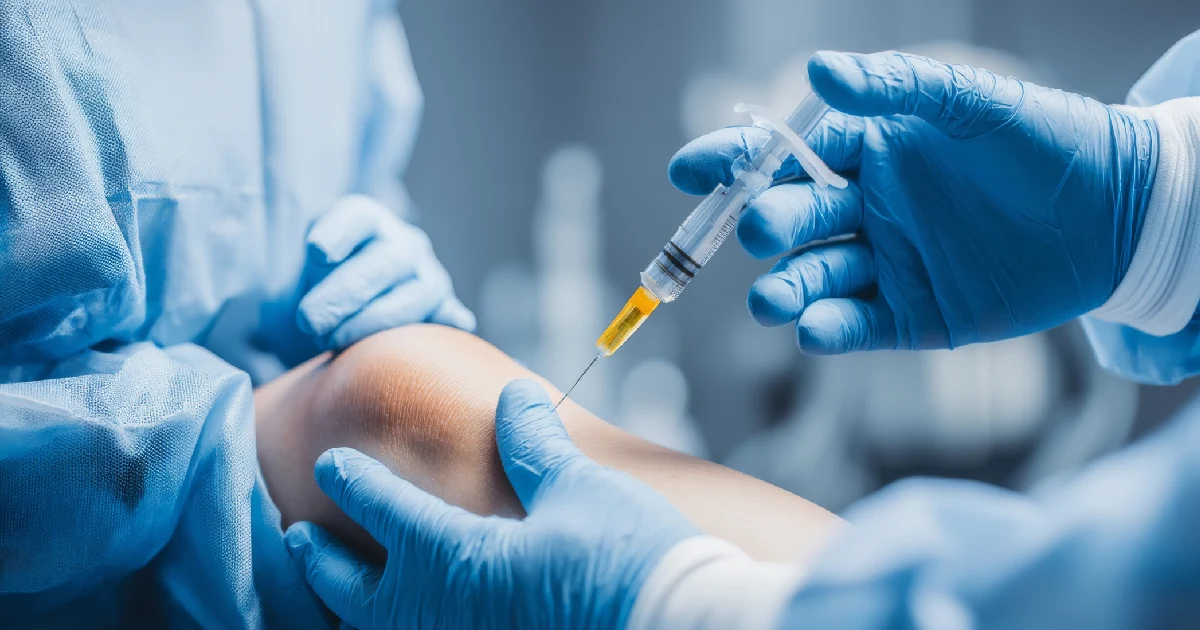Table of Contents
Are you waking up with stiff joints, working through a dull ache that never fades? Are you giving up activities you love? The constant discomfort can wear you down. Many people hear that surgery is the only solution. If you’re feeling torn between committing to surgery or trying yet another temporary fix, you’re not alone. More people are searching for options that don’t involve incisions or months of downtime.
Cellular therapy for pain at Ascend Regenerative is one of those options—and it’s changing how people think about long-term relief. Cellular Therapy for Pain in Denville, NJ, supports the body’s natural repair process. Rather than using medication to dull pain signals or surgically remove damaged tissue, cellular therapy introduces concentrated cells from your body into the areas that hurt the most.
Instead of just masking symptoms or cutting away tissue, cellular therapy taps into your body’s healing potential to repair damage from within. But is it the right approach for you? Let’s break down what cellular treatment involves, how it compares with surgery, and what you can realistically expect if you decide to move forward.
Surgery vs. Cellular Therapy: Which is better?
Surgery can be effective for certain severe conditions, especially with significant structural damage. It may be the best option if:
- A joint has completely deteriorated
- There is a fracture that requires hardware to stabilize
- Conservative treatments have failed over many years
However, surgery carries significant risks:
- Infection
- Blood clots
- Extended recovery
- Possible complications with anesthesia
- Scar tissue formation
Cellular therapy offers a different path:
- Less invasive
- Lower risk of infection
- Faster recovery
- No general anesthesia
- Personalized care plan
Many patients find that trying regenerative options first can delay or even eliminate the need for surgery. If surgery eventually becomes necessary, having tried conservative options first often leads to better outcomes because the tissues are in better condition. Considering natural chronic pain treatments in NJ, it’s worth consulting an experienced provider to see if this approach aligns with your goals. Contact Ascend Regenerative Today!
Benefits of Cellular Therapy for Pain
Choosing between surgery and cellular therapy isn’t always simple. But many people lean toward regenerative medicine for both practical and emotional reasons. Here’s why:
Natural Approach
Cellular Therapy for Pain in Denville, NJ is a non-surgical pain relief in Denville that uses your cells, so the risk of rejection or severe reactions is extremely low. For patients who want to avoid synthetic medications or implants, this is a reassuring option.
Minimal Invasiveness
Surgery typically involves incisions, hardware placement, or removal of tissue. Recovery can be slow, painful, and sometimes incomplete. Cellular therapy requires only a small collection needle and precise injections, so the physical disruption is minimal.
Faster Recovery
Because there are no large wounds to heal, recovery is significantly quicker. Many people resume normal activities within days rather than weeks.
Reduced Inflammation
Chronic pain often results from low-level inflammation that never fully resolves. Cellular therapy’s growth factors and proteins help calm this process at the source.
Long-Lasting Relief
Cellular therapy can improve tissue function instead of just managing pain. Many patients experience improvement that lasts several months or longer, especially when combined with physical therapy and good self-care.
Personalized Treatment
Every procedure is tailored to your condition, pain history, and lifestyle goals. Your provider designs a plan based on your unique needs rather than a one-size-fits-all protocol. If you’ve been frustrated with options that only cover up symptoms, this focus on healing damaged tissue can be a welcome change.
Who is this Best for?
Cellular therapy isn’t right for everyone, but it has helped many people with chronic musculoskeletal conditions find meaningful relief. You may be an excellent candidate if you:
- Have chronic joint or tendon pain that hasn’t responded to medication or therapy
- Want to avoid or delay surgery
- Are active and hope to maintain mobility
- Prefer treatments that are natural and less invasive
- Have early to moderate arthritis or overuse injuries
- They are generally in good health without severe immune disorders or active infections
Some people feel uncertain about trying something that sounds so different from conventional care. If you think the same, remember you don’t have to decide alone. Consulting a qualified provider helps you weigh your options carefully and see whether Denville regenerative medicine aligns with your goals.
What to Expect
Many people want to know exactly what the treatment will feel like. Here’s a step-by-step look at what you can expect if you decide to move forward:
Preparation
Before your procedure, your provider will:
- Review your medical history and imaging
- Explain the process in detail
- Give you guidelines about medications and supplements to avoid before treatment.
- Discuss your recovery plan
You may be asked to hydrate and rest well before the appointment.
Treatment Day
Most sessions last about two hours:
- The team numbs the collection site (either the hip area for bone marrow or the abdomen for adipose tissue).
- A small amount of tissue is collected with a needle.
- The sample is processed to concentrate healing components.
- The injection site is cleaned and numbed.
- Using ultrasound-guided cellular injections, the provider delivers the cells precisely where needed.
Discomfort is usually mild to moderate; most patients describe it as easier than expected.
After the Procedure
You can usually return home the same day. Mild soreness or swelling at the injection site is common but often resolves in a few days. Unlike surgery, you won’t need crutches, braces, or weeks off work.
When Results Appear
- Some improvement is noticeable within a few weeks as inflammation decreases.
- More significant relief develops over two to three months as the tissue regenerates.
- Depending on their condition and lifestyle, many patients experience results that last for several months or longer.
This timeline is part of why natural chronic pain treatments in NJ are gaining popularity—patients can get back to their lives much sooner without the long recovery of surgery.
Frequently Asked Questions
How long does cellular therapy relief last?
Results vary, but many people experience relief for several months to over a year. Some patients choose occasional follow-up treatments to maintain their results.
Is cellular therapy painful?
Mild discomfort is possible during collection and injection, but most people tolerate the procedure well with local numbing medication.
Does insurance cover cellular therapy?
Coverage varies widely. While many insurance plans still consider regenerative treatments experimental, more are starting to reimburse them. Check with your provider and insurance carrier to understand your options.
Can cellular therapy help arthritis?
Yes. Many patients with early to moderate osteoarthritis find meaningful relief and improved joint function with cellular therapy.
What’s the difference between cellular therapy and prolotherapy?
Prolotherapy uses an irritant solution to stimulate healing, while cellular therapy introduces concentrated cells directly. Your provider can help you compare options and decide what’s best for your situation.
Glow Up You Joints
Chronic pain doesn’t have to dictate your daily life. Ascend Regenerative offers cellular therapy, a safe, natural way to support your body’s healing and get back to what you love—without major surgery or months of downtime. If you’d like to find out if you’re a candidate, it only takes one conversation to start. Book Your Cellular Therapy Consultation Today!






